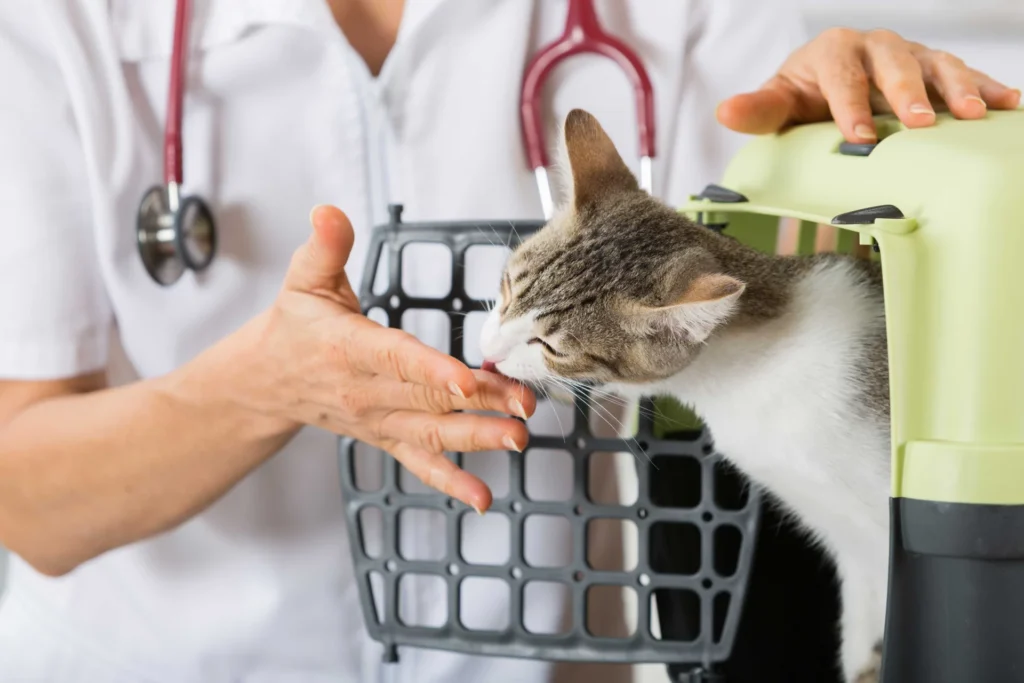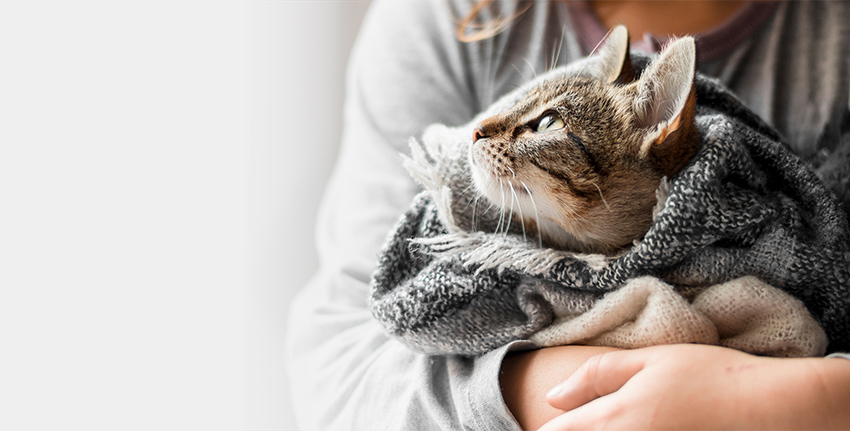Introduction
Cats are unique creatures—aloof yet affectionate, resilient yet sensitive. Yet, for too long, their veterinary care lagged behind that of dogs, with clinics designed more for canine comfort than feline needs. Enter the Cat Friendly Clinic (CFC) program, an initiative launched by the iCatCare Veterinary Society (formerly the International Society of Feline Medicine) under the umbrella of International Cat Care (iCatCare). Introduced to address the specific physiological and emotional needs of cats during veterinary visits, the CFC program has revolutionized how clinics worldwide approach feline care. As of April 2025, thousands of veterinary practices across continents have earned CFC accreditation, reducing stress for cats, improving clinical outcomes, and enhancing owner satisfaction. This article delves into the program’s history, its core principles, the accreditation process, its benefits, challenges, and its broader impact on feline welfare.
Origins of the Cat Friendly Clinic Program
The CFC program emerged from a growing recognition within the veterinary community that cats require specialized care. Historically, veterinary practices were designed with a “one-size-fits-all” approach, often neglecting the distinct needs of felines. Cats, unlike dogs, are more prone to stress in unfamiliar environments, which can exacerbate health issues or mask symptoms during examinations. This realization gained traction in the early 2000s, spurred by the work of the Feline Advisory Bureau (FAB), the predecessor to iCatCare.
In 2012, the International Society of Feline Medicine (ISFM), in partnership with the American Association of Feline Practitioners (AAFP), launched the Cat Friendly Clinic program. The initiative was a response to evidence showing that stressed cats were less likely to receive regular veterinary care, as owners avoided visits due to their pets’ distress. The program aimed to create a global standard for feline-friendly practices, building on decades of feline-focused research by iCatCare. Renamed the iCatCare Veterinary Society in January 2025, the organization continues to champion this initiative, offering free accreditation to its members and expanding its reach worldwide.
Core Principles of the Cat Friendly Clinic Program
The CFC program is built on a set of evidence-based principles designed to minimize stress and maximize the quality of care for feline patients. These principles are categorized into three accreditation levels—Bronze, Silver, and Gold—each with increasing standards of feline-friendliness. Key elements include:
- Understanding Feline Behavior: Cats are territorial and solitary by nature, making veterinary visits inherently stressful. Clinics must train staff to recognize signs of feline stress (e.g., flattened ears, dilated pupils) and handle cats gently, avoiding scruffing unless necessary.
- Physical Environment: A cat-friendly clinic separates cats from dogs and other animals to reduce sensory overload. This includes dedicated cat waiting areas, separate consultation rooms, and hospital wards with hiding spots (e.g., boxes or elevated perches) where cats feel secure.
- Equipment and Handling: Clinics must use feline-specific tools, such as smaller scales and quiet clippers, and adopt low-stress handling techniques. For example, allowing cats to remain in their carriers until calm can ease the transition to examination.
- Staff Training: Veterinary teams receive education on feline medicine and behavior, ensuring they can interpret subtle symptoms and communicate effectively with owners about cat care.
- Client Communication: Educating owners about reducing stress before and during visits (e.g., using pheromone sprays or familiar bedding) is a cornerstone of the program, fostering a collaborative approach to feline health.
The Gold level, the highest accreditation, requires additional features like advanced diagnostic equipment and a fully segregated cat ward, reflecting a clinic’s commitment to excellence in feline care.
The Accreditation Process
Becoming a Cat Friendly Clinic involves a structured yet accessible process, designed to accommodate practices of varying sizes and resources. Veterinary practices apply through the iCatCare Veterinary Society, submitting evidence of compliance with CFC standards. The steps include:
- Self-Assessment: Clinics complete a checklist tailored to their desired accreditation level (Bronze, Silver, or Gold). This covers facility layout, staff training, and handling protocols.
- Documentation: Practices provide photos, floor plans, and written policies demonstrating adherence to CFC criteria. For example, a Silver-level applicant might show a separate cat waiting area with visual barriers from dogs.
- Review and Feedback: The iCatCare Veterinary Society evaluates submissions, offering guidance if standards aren’t met. This supportive approach ensures clinics can improve without penalty.
- Certification: Successful applicants receive a CFC certificate, logo, and promotional materials to display, signaling their commitment to feline care. Accreditation is renewed annually, encouraging continuous improvement.
Membership in the iCatCare Veterinary Society includes free CFC accreditation, making it cost-effective for practices to join. Non-members pay a fee, though the program’s benefits often outweigh the investment.

Benefits of the Cat Friendly Clinic Program
The CFC program delivers tangible advantages for cats, owners, and veterinary practices alike, backed by data and testimonials as of April 2025.
- Reduced Stress for Cats: Studies cited in the Journal of Feline Medicine and Surgery (JFMS) show that CFC-accredited clinics lower cortisol levels in feline patients compared to non-accredited facilities. Features like quiet environments and gentle handling reduce fight-or-flight responses, improving diagnostic accuracy.
- Improved Health Outcomes: Stress can mask symptoms or worsen conditions like feline lower urinary tract disease (FLUTD). CFC practices report higher rates of early detection and successful treatment, as calmer cats allow for thorough examinations.
- Enhanced Owner Satisfaction: Owners appreciate the effort to make visits less traumatic. A 2024 iCatCare survey found that 87% of cat owners preferred CFC-accredited clinics, citing better experiences and trust in staff expertise.
- Business Growth: Veterinary practices benefit financially from CFC status. The accreditation attracts cat-owning clients, increasing foot traffic and loyalty. Clinics often see a 15-20% rise in feline appointments within the first year, per iCatCare’s internal data.
- Professional Development: Staff gain specialized skills in feline medicine, boosting morale and expertise. This aligns with the growing demand for niche veterinary services.
Real-world examples abound. A Gold-level CFC in Edinburgh reported a 30% drop in cat aggression incidents post-accreditation, while a Silver-level practice in Texas saw a 25% increase in preventative care visits, highlighting the program’s versatility across regions.
Challenges in Implementation
Despite its success, the CFC program faces hurdles that limit its universal adoption:
- Resource Constraints: Small or rural practices may lack the space or budget for separate cat facilities. Retrofitting older buildings can cost thousands, deterring some from pursuing higher accreditation levels.
- Staff Resistance: Changing entrenched handling habits requires time and training. Some veterinarians, accustomed to canine-focused methods, initially resist adopting feline-specific techniques.
- Owner Awareness: While the program benefits cats, many owners remain unaware of CFC accreditation. Marketing efforts must bridge this gap to maximize impact.
- Global Variability: Veterinary standards differ by country. In regions with limited feline medicine education, achieving even Bronze status can be daunting without additional support.
The iCatCare Veterinary Society mitigates these challenges through free resources, webinars, and flexible accreditation tiers, ensuring inclusivity. However, scaling the program to underserved areas remains an ongoing effort.
Global Impact and Expansion
By April 2025, the CFC program has accredited over 2,500 clinics worldwide, spanning North America, Europe, Asia, and Australia. The AAFP oversees implementation in the U.S., while iCatCare manages Europe and beyond, creating a cohesive global network. In the UK alone, 1,200 practices hold CFC status, reflecting the program’s strong foothold in its home country.
The initiative’s influence extends beyond accredited clinics. Non-CFC practices adopt its principles informally, inspired by its success. For example, a 2025 study in JFMS Open Reports found that 40% of non-accredited UK clinics had introduced cat-only hours, a direct ripple effect of CFC advocacy.
The program also supports feline welfare broadly. By reducing stress-related health issues, it decreases the need for costly interventions, benefiting owners and shelters alike. In collaboration with TNR (trap-neuter-return) programs, CFC clinics often provide discounted services for unowned cats, aligning with iCatCare’s mission to improve all feline lives.
Future Directions
Looking ahead, the CFC program aims to evolve with emerging trends in veterinary care. Plans for 2026-2030 include:
- Digital Integration: Virtual consultations and AI-driven stress monitoring tools could enhance CFC practices, offering remote support for anxious cats.
- Sustainability: Eco-friendly clinic designs, like energy-efficient cat wards, are being piloted to align with global environmental goals.
- Outreach: Multilingual resources and subsidized accreditation for low-income regions aim to democratize access, targeting 5,000 accredited clinics by 2030.
- Research: Ongoing studies, funded by iCatCare, explore how CFC principles can adapt to new feline diseases, ensuring the program remains cutting-edge.
The World Feline Congress in Edinburgh (June 26-27, 2025) will showcase these innovations, reinforcing the CFC’s role as a trailblazer in feline medicine.

Conclusion
The Cat Friendly Clinic program is more than an accreditation—it’s a movement to reimagine veterinary care through a feline lens. By prioritizing cats’ emotional and physical well-being, it bridges a critical gap in animal healthcare, benefiting pets, owners, and professionals alike. As of April 2025, its global footprint and proven efficacy underscore its status as a gold standard in feline welfare. Challenges remain, but with iCatCare’s unwavering commitment, the CFC program is poised to shape the future of veterinary practice, ensuring every cat steps into a clinic with less fear and more trust.


Leave a Reply